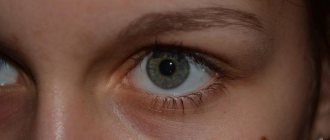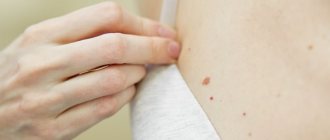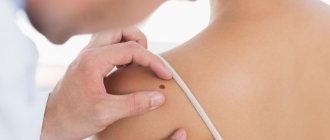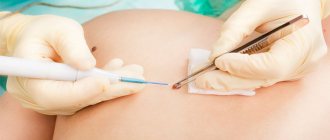Considering the viral nature of the origin of pigmented neoplasms, any changes that occur with them should not be ignored. This is especially true for those tumors that ache or become inflamed - such vivid symptoms may indicate its degeneration into melanoma. The first thing to do is to understand the causes of the pain. Let's look at the main reasons.
Types of moles
Moles can be congenital or acquired. Congenital age spots are most often inherited and can vary in size, shape and color. Acquired tumors can appear due to a number of factors:
- Change in radioactive background.
- Changes in hormonal levels in the body (pregnancy, puberty, various diseases)
- Excessive doses of ultraviolet radiation.
- Genetic predisposition.
Nevi are also divided into hemangiomas and non-vascular types. Hemangiomas are formed when a vessel is damaged and are most often red or pink in color. There are capillary (located on the surface of the skin) and cavernous (located deep in the skin) formations.
There are many types of non-vascular moles. They can be flat, convex, with different shapes. The color range of nevi is very diverse - from flesh-colored to black. The sizes of nevi are also very variable - from small dots to huge spots on the body.
In some cases, moles appear on their own, without any factors or causes. This phenomenon does not pose any danger to human health.
The danger of degeneration of moles
Sometimes nevi change their color and shape. Moles do not like prolonged exposure to the sun and artificial tanning. It has long been noted that a chocolate tan has nothing to do with health. After all, ultraviolet rays damage DNA, which is the main reason for the degeneration of cells into malignant ones.
Scientists have noticed that in 50% of cases, skin cancer occurs on the legs, which are most often exposed in children in the summer. And one more assumption is put forward by scientists. Skin cancer occurs more often in those people who were exposed to the sun a lot in childhood. It is no coincidence that the World Health Organization recognizes ultraviolet rays as a carcinogen, as well as smoking, asbestos and arsenic.
We cannot completely deny the benefits of sun rays; we know that vitamin D is produced under the sun. But the benefits must be extracted wisely. Therefore, it is necessary to protect your skin with sunscreen while relaxing. It is better to be on the beach in the morning and afternoon, when the sun is no longer so aggressive.
Exposure to ultraviolet radiation
A symptom where birthmarks hurt may indicate the negative effects of ultraviolet radiation. For pain to occur, a person does not have to deliberately lie for a long time and regularly on the beach or sunbathe - just walking down the street, working or relaxing in the open air is enough.
© shutterstock
Ultraviolet radiation usually affects moles that are located on open areas of the body - arms, face, legs, neck . The appearance of pain in the nevus itself, redness of exposed skin, severe itching and burning, increased body temperature, weakness and signs of fever directly indicate that the person has been actively exposed to ultraviolet radiation. The mole may become inflamed. If the pain persists, you should contact the clinic. After an examination, the doctor may decide to remove the nevus. After surgery, he will prescribe anti-inflammatory treatment and medications to relieve pain.
During the period of active sun, you need to wear clothes and hats that hide areas of the body with moles. It is necessary to use sunscreens or sprays and limit exposure to the street during dangerous hours.
Causes of rebirth
In most cases, skin growths are completely harmless. But sometimes moles from benign formations can degenerate into malignant ones. This is due to factors that provoke cancer.
- Ultraviolet
. People who like to sunbathe a lot or who abuse solariums are at great risk. Ultraviolet radiation can trigger negative changes in nevus cells. - Damage to a mole
. Even the most trivial scratch or injury to a mole can cause degeneration into oncology. Therefore, you need to carefully monitor the condition of moles that are located in problem areas: on the hands, feet, in places where clothes rub. - Genetic factors
. People with a family history of melanoma have an increased risk of moles developing into cancer. This is due to genetic predisposition. - Hormonal factors
. Changes in hormonal levels provoke not only the appearance of new moles, but also the cellular transformation of existing nevi. Moles most often change during puberty, with diseases of the endocrine system, during pregnancy and lactation, and during menopause.
Healthy nevi are absolutely painless when pressed or touched. If for any reason a mole causes pain, you should consult a dermatologist or oncodermatologist.
Melanoma formation
Sometimes a person may notice that his mole is growing and hurting, and other metamorphoses are occurring with it. Such changes may indicate a dangerous degeneration of an ordinary nevus into melanoma - skin cancer. A cancerous tumor can grow deep into the tissue or into the superficial layers of the skin. The process is characterized by rapid spread and active formation of metastases.
© shutterstock
An ordinary, “harmless” mole can become melanoma and become very painful in several cases. Provoke the degeneration of nevus cells (melanocytes) into cancer hazards :
- damage to a mole of a mechanical nature, injury when its structure is disrupted;
- active exposure to ultraviolet radiation;
- genetic predisposition, presence of melanoma in close relatives;
- changes in the body of a hormonal nature, the most dangerous are adolescence, pregnancy, menopause, the presence of pathologies of the endocrine system;
- decreased immune defense;
- the presence of a large number of moles on the body;
- bright skin.
The transformation of moles into melanoma is observed in people belonging to the middle and older age groups. According to statistics, this type of cancer often develops in men.
The main sign indicating the presence of melanoma is pain - the mole hurts when pressed and without such pressure. The spot becomes asymmetrical, has an uneven color, with darkening and light areas . Its edges become ragged or fuzzy. The mole rises noticeably above the surface of the skin. Its structure becomes loose, bleeding and pus appear, and crusts form. There is a burning sensation and pain around the mole, which intensifies over time. In advanced stages, when cancer is accompanied by metastasis, a person rapidly loses weight, his lymph nodes enlarge, his skin becomes gray, his head hurts severely, and a persistent cough appears.
The presence of pain in a mole against the background of its structural changes cannot be ignored. You should contact a medical facility immediately. To diagnose melanoma, a visual examination of the nevus is used, and tests of the patient’s blood and urine are performed. A tissue biopsy (excisional and incisional), a cytological examination of lymph node puncture, and instrumental studies to identify changes in internal organs are required. The doctor assesses the depth of tissue damage by the tumor using infrared radiation.
If a mole has enlarged and hurts and causes discomfort, you must not allow it to degenerate into melanoma. The nevus needs to be removed. The procedure uses gentle methods - surgery using a laser or radio waves, removing the mole with a scalpel and capturing damaged tissue. If the diagnosis of melanoma is confirmed, courses of chemotherapy and immunotherapy are necessary. The prognosis for the patient directly depends on the stage at which melanoma was detected and the formation was removed.
Causes of pain
According to statistics, the most common cause of pain in a mole is its trauma. One of them is a chemical burn. In everyday life - at home, at work, people often come across chemicals - acids, alkalis. When they come into contact with the body, the mole becomes very painful and inflamed. Some cosmetics have an aggressive effect (usually a mole on the face hurts). The symptom may occur as an allergic reaction to the components of the serum, cream, oil that are used in the procedures. A mole on the back often hurts when performing a massage.
Pain occurs after mole removal. To prevent it, you should follow the rules:
- avoid any damage to the skin;
- do not wet the area where the intervention was performed until the tissue heals;
- avoid direct exposure to ultraviolet radiation;
Use medicinal and cosmetic products prescribed by a doctor.
Mechanical injury
A mole hurts when touched if its tissue has been mechanically damaged. The nevus is injured in different ways - it can be rubbed when wearing clothes or shoes, its tissues are damaged by cuts, bruises, and punctures with sharp objects. A mole on the head may begin to hurt after washing and combing your hair, changing your sleeping position, or wearing a hat.
© shutterstock
A hanging mole or one that protrudes above the surface of the skin often hurts. Any injury involves a violation of the integrity of the tissue - pain in the mole occurs for this reason. There is a great danger of developing inflammation, because microbes, viruses, fungi can enter a damaged nevus from the environment and begin active reproduction. To prevent infection from occurring, you need to see a doctor. Depending on the situation when a mole injury occurred and pain occurred, experts advise the following actions :
- if a mole is completely torn off, it cannot be thrown away, it must be saved for research;
- the wound should be treated with an antiseptic agent and carefully covered with a sterile bandage;
- For most patients, if the integrity of the nevus is damaged or pain occurs, it is necessary to completely remove its tissue and conduct the necessary tests.
In addition to surgical removal of the mole after its injury, additional treatment is necessary. The patient is prescribed painkillers and anti-inflammatory drugs.
Dangerous symptoms
- Enlargement of a mole or thickening of the dermis underneath it.
- Changes in the usual outlines of a pigmented formation, loss of symmetry.
- The appearance of a border or redness of the skin around the nevus.
- Peeling formation, the appearance of cracks on the surface, the release of fluid from the mole.
- Change in color, appearance of other shades on the body of the mole.
- The presence of itching or burning in the area of the birthmark.
When diagnosing one of the symptoms, there is no need to hesitate; timely contact with a specialist will quickly determine the cause of the changes and prescribe appropriate treatment.
Video - Symptoms of a mole (nevus)
Which doctor should I contact?
The causes of pain in the mole are determined by a specialist. If a symptom appears, a visit to the clinic should not be postponed - any nevus under unfavorable conditions can transform into melanoma. The oncological process in this case has a very high development rate and is difficult to treat in advanced stages.
If a mole starts to hurt, you need to make an appointment with a dermatologist. After the initial examination, if indicated, he may refer the patient for an appointment with specialized specialists - an oncologist or a dermatologist-oncologist.
© shutterstock
How is pathology diagnosed?
When a patient indicates that a mole is growing and hurting, a comprehensive medical diagnosis is performed. If oncological transformation is suspected, the dermatologist should prescribe the following additional study - tissue biopsy. The skin sample is removed and sent to the laboratory. The procedure is performed under local anesthesia. Various options for collecting a particle or a whole nevus are determined. But keep in mind that they all leave scars. The choice of method depends on the size of the pigmentation and the inflamed area.
A situation where a patient complains that there is pain around a mole involves removing as much pathological and nearby tissue as possible in order to establish a more accurate and definitive diagnosis. Sample collection is performed in one of the following ways.
It is carried out in cases where not just the mole itself is inflamed and hurts, but also other areas (for example, it hurts under the mole):
- with the incisional method, part of the formation is removed. Using a surgical knife, the doctor cuts through the entire thickness and nearby areas to represent the whole picture;
- The excision technique involves cutting out not a particle, but the entire formation. This option is preferable for oncologists, but is not always feasible due to the difficulty in locating the nevus.
If the results of a malignant mutation are confirmed, additional tests and examinations may be required not only on the affected part, but also on other parts of the body (lymph nodes, lungs, liver, brain, intestines, etc.). This depends on the specific stage of the cancer process and the presence of metastases.
Change in air temperature
There are a huge number of nerve endings on the human skin. Changes in ambient temperature negatively affect moles and can cause pain in them. The temperature regime that is comfortable for humans corresponds to approximately 20 degrees Celsius. Unfortunately, such indicators are observed for a short time. In the summer there is a noticeable increase in the indicator, and in the autumn-winter there is a significant decrease. The skin takes an active part in the process of thermoregulation. When the temperature changes dramatically, the skin tissues and moles located within them experience stress and pain.
© shutterstock
When the situation persists and there is pain in the moles, which can intensify when pressed, you need to consult a doctor. He will conduct a visual examination of the patient, and if there is a change in the structure of the nevus, he will prescribe an additional study - a biopsy of its tissue. Often a decision is made to remove a growth or several.
How to diagnose moles yourself
From nature we receive surprises that we do not expect at all, because often nothing depends on us. You often have to put up with such gifts of nature throughout your life. This applies to moles, which every person has in the form of single inclusions or numerous spots on the body.
The most important thing is that moles on the body do not cause discomfort, much less become a threat to life when a benign mole degenerates into melanoma - a malignant tumor. How to independently diagnose moles and remember simple rules on how to care for them?
Treatment
The most effective treatment is removal of the mole. Most often, such operations are not complicated and have a very short recovery period. It all depends on the depth, size and type of formation. Today there are 5 types of surgical interventions.
| Operation name | Advantages | Flaws |
| Laser therapy | Minimal interference in the nearby layers of the dermis due to the ability to control the depth of immersion of the rays. No pain and quick recovery after surgery. The process does not take more than 10 minutes. No scars are formed at the intervention site | Impossibility of collecting tissue for histology. The quality of the operation depends on the power of the equipment |
| Radio wave therapy | A quick and painless method for removing nevi. Possibility of tissue collection for research. No scars or scars. Minimum recovery time | This method can only remove small formations protruding above the surface of the skin. |
| Electrocoagulation | Quick and painless removal of formations. Minimal trauma and no scars after the intervention. Possibility of tissue collection for research. Ability to control the depth of current exposure | Inability to remove large formations or those that have grown deep into the layers of the dermis |
| Cryodestruction | Using nitrogen, formations of any size and depth are removed. The process does not take much time. A dense crust forms at the intervention site, protecting the tissue from infection. | After the procedure, a crust forms, which heals for about 30 days. Scars may also remain on the skin. It is impossible to take tissue for histology. Repeated surgery is often required due to the inability to control the penetration of nitrogen deep into the skin. In some cases, healthy tissue is affected, which increases the size of the intervention |
| Surgical intervention | Possibility of removing malignant tumors with deep excision of nearby tissues, which eliminates the recurrence of tumors | Local anesthesia or general anesthesia. Suturing, care of the surgical site. Postoperative scar |
Proper care for moles
The presence of moles is not a death sentence; if certain conditions are met, they will not cause any particular inconvenience. Fair-skinned girls, as well as pregnant women, are mainly at risk, since changes in hormonal levels themselves are a difficult test for the body, which affects all organs.
We must remember - moles do not like the sun. With excessive solar radiation - ultraviolet radiation, a burn occurs on the skin, which provokes negative pathologies of the skin, the formation or transformation of moles.
During the hot period of the year, it is necessary to pay special attention to proper, reasonable and moderate sunbathing, usually from the morning until 11-00 and in the afternoon after 16-00. You need to make sure that your moles are not regularly injured by sharp nails, a washcloth or clothing.











